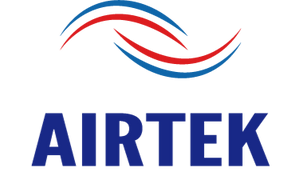TOP SIGNS THAT YOUR CUSTOMER’S FURNACE IS FAILING (AND WHY THEY NEED YOU, THE HVAC CONTRACTOR)
As a trusted HVAC contractor, you understand that knowing how to build a proactive approach to maintenance and spot the warning signs of failure is essential for ensuring your clients receive the repair and replacement jobs they want on time. Airtek will provide the best parts and training for you, but let’s make a quick review of the important markers you should advise your clients to watch for—markers that require them to call for help. Identifying these hot spots with your heating system is the plan that your contractor's to get successful customer service calls and prove value to keep your end user's home safe and comfortable.
Unnatural and High Noise during Operations. Such unusual sounds indicate mechanical stress/failure by a homeowner, causing the furnace to get repaired.
Banging/Popping: A result of delayed ignition (gas build-up), or metal expansion/contraction in a duct, which indicates airflow or burner problems.
Squealing/Screeching: A frequently occurring result of worn-out belt or bad bearings in the blower motor (one ideal candidate for component replacement).
Grinding/Scraping: When a motor or blower wheel has failed, in which metal rubs metal. Therefore, it needs to be shut down and professional service so as not to cause catastrophic failure.
No Uniformity of Heating Performance. The single most direct complaint of failure signs is heat. Such problems frequently result in a diagnosis and prescription for repair, failure and replacement recommendations for parts.
Insufficient Heat Output: The burner assembly may be compromised, a heat exchanger crack might be affecting the efficiency of the unit, or the unit might be undersized or beyond its effective life.
Short Cycling: It is turning off too soon. This can be due to an overheating problem (dirty filters, blocked vents) or by failing components (like the limit switch or flame sensor) that cause the flame to go out. Short cycling increases costs and speeds up wear.
Cold Air Only: The thermostat requires heat, but the burner doesn't ignite. Among the common culprits are a faulty ignitor/pilot light, a bad gas valve, or a fan limit switch that doesn't turn on or off.
Energy Waste and High Bills. For example, when a client has unexplained spikes in their heating bill — the furnace has lost a lot of efficiency. This is a very effective sales tool for suggesting a viable replacement or upgrade of a high-performance component.
Decreased AFUE (Annual Fuel Utilization Efficiency): The older or failing parts of the unit will run longer than normal to meet the thermostat setting, resulting in rising utility costs.
Dirty/Clogged Components: A dirty blower wheel, heat exchanger, or evaporator coil (if combined system) limits airflow and heat transfer, compounding the unit work harder.
Safety Hazards: Carbon Monoxide and Gas Leaks. The top warning signs are those of the greatest concern and they require instant response from the HVAC contractor. Teach your clients that safety is a priority.
Yellow Pilot Light – A yellow or orange flame (the healthy flame is the solid and healthy colored blue flame, not yellow) indicates combustion is not complete and the gas emissions produced include Carbon Monoxide (CO). This poses a high risk to home safety.
Sulphur/Rotten Egg Smell: This indicates that a gas leak may have occurred. Shut the system down and contact the utility immediately, followed by an emergency service call from you.
CO Detector Activation: They must evacuate if their CO detector goes off, and call the authorities immediately. Your return is a quality checklist for heat exchanger cracks or flue obstruction.
Partner for Furnace Repair: Airtek Service. When your professional services are needed you need dependable replacement parts, top quality, fast. Airtek service strives to put in place the inventory and technical support you need to deal with any furnace repair or replacement as effectively as possible. Once you know the signs you’re in serious trouble with, you can make a more efficient effort to help you educate your clients, make more service calls, and maintain that reputation as the first to go for contractors in your area when it comes to HVAC.




